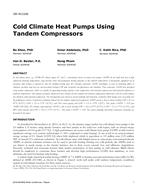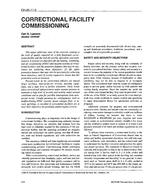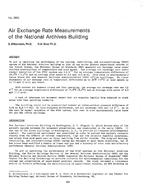Sustainability has become a wide-ranging term that can be applied to almost every facet of life on Earth, from a local to a global scale, socially, economically and environmentally. The most commonly accepted definition of sustainable development is “meeting the needs of the present without compromising the ability of future generations to meet their own needs†(UN Brundtland Commission, 1987). ASHRAE has defined a strategic plan to lead to the advancement of sustainable building design and operation (ASHRAE’s Sustainability Roadmap, 2006). Sustainability for ASHRAE means energy efficient, healthy, productive indoor environments (Harrison, 2008). How should we deliver such sustainability promises to air filtration in HVAC systems? In Part I of this study (Sun et al., 2009), we discussed the need to establish an industrial standard to evaluate filter energy efficiency, and a wattage method was developed to classify filter energy efficiency.
There are more factors that have to be considered in reality beyond filtration efficiency and energy efficiency in terms of sustainability of air filters, such as material source and disposal, shipping and handling, installation and change-outs, potential by-pass or contamination, and their impacts on the ecosystem, etc. This paper is the second part of a continuous research to discuss sustainability of the air filters along their service using life cycle cost analysis. The demonstration is based on a real case study of an air handling unit (AHU) of a commercial building. An in-depth study on filter design, media structure and dust loading morphology will be presented at the end to better understand a sustainable design for air filters.
Citation: ASHRAE Conference Papers, 2010, vol. 116, pt. 2, Albuquerque, NM
Product Details
- Published:
- 2010
- Number of Pages:
- 8
- File Size:
- 1 file , 560 KB
- Product Code(s):
- D-AB-10-C003


